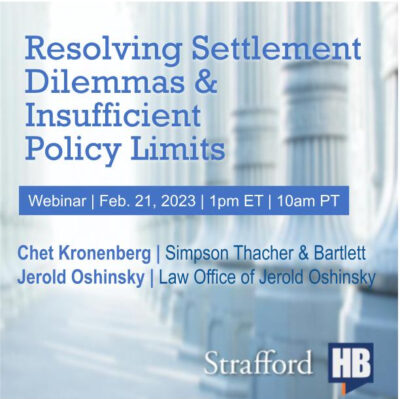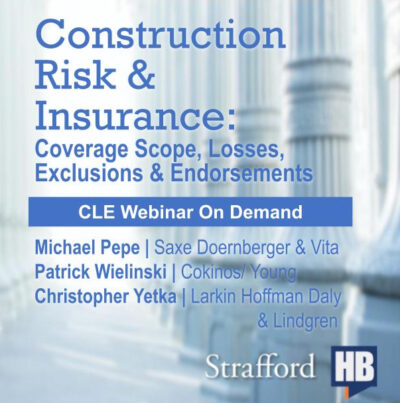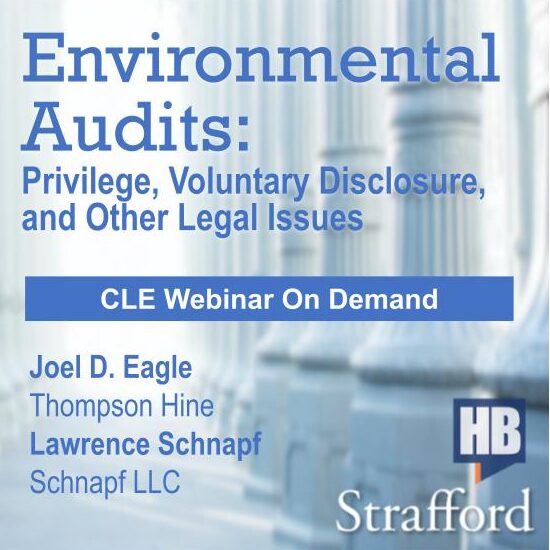Company Offers to “Pay” Part of Settlement with Addiction Pharmaceuticals
While the Sackler family has upped the ante, the settlement is met with some groans and skepticism.
Jessica Hartogs, Editor at LinkedIn News:
“Purdue Pharma has offered up a $10 billion restructuring plan that would pay $500 million up front to settle approximately 135,000 claims linked to the company’s role in the opioid epidemic. The Sackler family would pay more than $4 billion over a decade and also give up domestic ownership of the company, which is alleged to have fueled the deadly national opioid crisis with its OxyContin drug. They would also admit no wrongdoing. Two dozen state attorneys general immediately rejected the plan, reported NPR.”
Charlie Kingdollar, Retired Emerging Issues Officer at Gen Re:
Members of the Sackler family offered roughly $4.3 billion to resolve sprawling opioid litigation, up from $3 billion initially proposed in settlement discussions.
“The new settlement plan put forth by the Sacklers is $1.3 billion higher than their original offer and if approved it will be used to reimburse states, local governments, Native American tribes and other plaintiffs who have successfully sued Purdue for its role in fueling the opioid crisis… As part of the proposal, the $4.28 billion from the Sacklers will be paid in installments over a decade and additionally the company would pay around $500 million in cash up front.”
Purdue’s chapter 11 plan must be approved by a bankruptcy judge and likely will be challenged in court by individuals who have suffered injuries from opioids and state attorneys general who have not signed onto the deal. A final resolution isn’t expected before the summer. “We’re going to keep fighting for the accountability that families all across this country deserve,” said Massachusetts Attorney General Maura Healey, who, along with 23 other attorneys general, voiced opposition to the plan Monday and called for greater transparency and more money upfront from the Sacklers.
Fred Johnson, Attorney, Spencer Fane LLP:
“[T]he company that introduced America to OxyContin and is alleged to have ushered in the opioid epidemic in the country, has proposed a $10B settlement to resolve 1000s of civil lawsuits and other civil and criminal matters and its bankruptcy, and allegedly intends to fund part of the settlement through the sale of ‘overdose reversal’ and addiction treatment drugs that it has in development. Seriously.”
Resolving Insurers’ and Insureds’ Settlement Dilemmas When Policy Limits Are Insufficient: Multiple Insured and Multiple Claims
Resolving Insurers' and Insureds' Settlement Dilemmas When Policy Limits Are Insufficient: Multiple Insured and Multiple Claims Liability insurers, depending on the jurisdiction, may have to accept a policy limit settlement demand when liability is reasonably clear and the amount of the judgment "likely" will exceed the policy limit. Unique problems arise when an insured faces multiple claims from a single occurrence, liability is clear, and the policy limits are insufficient to settle all claims. Options for dealing with the issue exist, but all potentially expose the insurer to bad faith claims. The panel will explore different approaches, the jurisdictions that follow them, and solutions that offer insurers the best protection from extracontractual claims.Equally vexing is the situation in which more than one insured, such as both the owner of a vehicle and its driver, are covered under one policy. A claimant might demand the policy limits but release only one of the insureds. In such a situation, the insurer could face bad faith claims from one insured for refusing to settle and from the other for agreeing to settle.An interpleader action may not be the answer. Interpleading policy limits can leave the insurer vulnerable to accusations of artificial exhaustion, abandonment of the duty to defend, and a bad faith claim that the insurer shirked its duty to use policy funds to limit the remaining liability of the insured.Listen as our panel discusses these issues and reviews the best strategies for resolving the claims while avoiding bad faith litigation. Outline Multiple claimants and insufficient policy limits First come, first served Settle as many as possible Settle based on the severity of the injury Prorate proceeds based on some formula Multiple insureds and insufficient funds to release all "Majority" view "Minority" view Interpleader Impact on the excess carrier A Strafford production specially selected for HB audiences. Chet Kronenberg Partner Simpson Thacher & Bartlett Jerold Oshinsky Attorney Law Office of Jerry Oshinsky The panel will review critical issues, such as: Should the insurer settle with multiple claimants [...]
Construction Builders Risk and CGL Insurance: Scope of Coverage, Covered Losses, Exclusions, AI Endorsements
Construction Builders Risk and CGL Insurance: Scope of Coverage, Covered Losses, Exclusions, AI Endorsements: Mitigation Construction- Related Disputes; Key Challenges for Claims Under Builders Risk Vs CGL Coverage Counsel to builders and developers must consider are who is covered, what property is covered, what limits and sublimits apply, and when/how coverage applies. Because builders risk policies are not standardized, coverage varies dramatically between insurers. Coverage disputes often arise over the types of costs recoverable, calculation of economic damages, and the coverage exclusions and exceptions.For liability disputes, CGL coverage must be adequately placed to cover construction risks during the course of construction as well as after. Typical issues include who is covered, the scope of coverage, and exclusions and conditions that apply.Counsel often must also navigate the interplay between builders risk policies, CGL policies, including wrap policies, and professional liability policies. These issues are influenced by the language of the policies and the parties’ contractual obligations to each other. Attention to the details is necessary to ensure coverage is triggered when necessary.Listen as our authoritative panel guides you through the characteristics of builders risk and CGL insurance policies and how these policies are used to mitigate developer and contractor risks. Outline Builders risk policies Contractual requirements Scope of coverage Troublesome exclusions and conditions Common issues and practice pointers CGL policies Scope of coverage Exclusions and exceptions to exclusions Costs recoverable Wrap policies Additional insured endorsements A Strafford production specially selected for HB audiences. Michael V. Pepe Partner Saxe Doernberger & Vita Patrick Wielinski Principal Cokinos| Young Christopher Yetka Shareholder Larkin Hoffman Daly & Lindgren The panel will review these and other key issues: What are the critical challenges for claims under builders risk vs. CGL policies? What does a typical builders risk policy cover? What are the standard exclusions and exceptions in builders risk policies? What occurrences do most CGL policies cover? What are the standard exclusions and exceptions in CGL policies? Can a general contractor or developer rely upon additional insured coverage to [...]
Allocating CERCLA Liability: Divisibility or Section 113 Equitable Contribution
Allocating CERCLA Liability: Divisibility or Section 113 Equitable Contribution Assessing Harm, Proving Divisibility of Harm Defense Absent a Bright-Line Test, and Apportioning Costs The U.S. Supreme Court's decision in Burlington Northern & Santa Fe Railway Co. v. U.S. significantly changed the landscape for divisibility under CERCLA. However, there is no bright-line test for determining divisibility, and the courts have taken different approaches in evaluating this issue.In decisions involving the Fox River in Wisconsin and the Upper Columbia River in Washington state, as well as opinions from courts in Rhode Island and South Carolina, judges and parties have wrestled with the critical question for divisibility: is the harm "theoretically capable of apportionment"?If a court answers this question with a yes, the party seeking to limit its liability succeeds. If the answer is no, that party must try again under a much less favorable equitable allocation approach. These and other opinions addressing the divisibility/apportionment divide continue to guide courts, litigants, and pre-litigation parties as they attempt to settle or otherwise resolve responsibility at contaminated sites.Listen as our authoritative panel examines the statutory language and what the Burlington Northern decision and its progeny mean for divisibility. The panel will also review cases applying this problematic technical issue and offer practice pointers on which circumstances lend themselves to a divisibility defense and how to present it. Outline Divisibility defense under CERCLA Statutory language What the BNSF decision means for divisibility Section 113 equitable contribution Lessons learned from recent decisions Best practices Circumstances lending themselves to a divisibility defense Presenting a divisibility defense A Strafford production specially selected for HB audiences. Jane B. Story Partner Jones Day Rachel K. Roberts Attorney Beveridge & Diamond The panel will review these and other key issues: How are different jurisdictions applying the Burlington Northern decision in divisibility cases? What circumstances lend themselves to a divisibility defense? What steps can counsel take to overcome the challenging issues involved in proving divisibility?
Environmental Audits: Privilege, Voluntary Disclosure, and Other Legal Issues
Environmental Audits: Privilege, Voluntary Disclosure and Other Legal Issues: Ensuring Compliance With Environmental Laws, Responding When Violations Are Discovered Environmental audits allow companies to proactively identify and address environmental problems before civil litigation or enforcement actions arise. The EPA and many states offer companies incentives to encourage compliance, including self-reporting identified issues in order to be eligible for potential reduced or eliminated penalties.Whether a newly acquired or long-standing business, companies and their counsel must take measures to ensure ongoing environmental compliance and environmental audits provide an avenue for detecting and correcting potential problems. Regular self-auditing can help reduce governmental penalties and limit injunctive relief faced in enforcement actions, apart from voluntary disclosure of noncompliance to regulatory agencies.There are potential risks associated with voluntarily uncovering and documenting violations, as well as with the disclosure of violations. Audit findings can be evidence of compliance gaps and a company's knowledge of those holes. And audit disclosures may not always lead to a clean resolution of disclosed violations with the regulatory agency. Disclosed information could still lead to enforcement action and also may provide ammunition in private actions against the disclosing party.Listen as our panel of environmental attorneys examines environmental enforcement policies and environmental auditing programs. The panel will discuss privilege and its exceptions, as well as the pros and cons of voluntary disclosures. The panel will also offer strategies for responding to enforcement actions. Outline Environmental compliance auditing Privileges available to protect audit-derived information Voluntary audit disclosure EPA program State programs Audit opportunities for new owners Complications for auditing and disclosure arising from recent enforcement trends A Strafford production specially selected for HB audiences. Joel D. Eagle Partner Thompson Hine Lawrence Schnapf Principal Schnapf LLC The panel will review these and other key issues: How can companies and their counsel use environmental audits to improve compliance and soften the impact of a government enforcement action? What are the best practices for counsel to advise clients that are considering utilizing environmental compliance audits? What are the expected costs and [...]
PFAS Consumer Fraud Litigation
HB Litigation Conferences presents a CLE-eligible webinar PFAS Consumer Fraud Litigation and Regulation On August 26, 2022, yet another PFAS consumer fraud lawsuit was filed against a product manufacturer in which it is alleged that since the products contained PFAS and the company marketed the products as environmentally friendly and safe for use by consumers, a proposed class of consumers was deceived into buying the allegedly unsafe products. The lawsuit is not an isolated incident, as there have been over 20 such lawsuits, almost all of them filed in 2022. With the ever-increasing media, political and scientific attention being given to PFAS, the panelists predict that these lawsuits will continue to increase at an exponentially increasing rate moving forward against companies of all sizes that manufacture and supply products. Bringing together almost 20 years of product litigation experience and decades of scientific expertise in the field of chemicals such as PFAS, the panelists will discuss the legal issues that companies are facing from current or legacy uses of PFAS (whether intentional or not) and practical solutions that can be taken pre-lawsuit to understand and minimize risk. Questions answered: What do state and federal regulations say about PFAS in drinking water? If your company doesn’t use the two original types of PFAS, are you at less risk of litigation? Which industries currently face the most risk of PFAS-related consumer fraud cases? Are plaintiffs securing significant verdicts in personal injury litigation? And more! Plus, email your questions to the presenters. On Demand CLE Webinar What you get PowerPoint and supplemental materials. Complete recording for later review. Answers to your questions via email. Invitation to contact speakers. 1.5 CLE credit*. CLE assistance. *Subject to state bar rules. For licensed attorneys. Register Download a free article! Meet the Speakers John Gardella Shareholder | CMBG3 John is a recognized thought leader on PFAS issues and a seasoned trial attorney with over 75 verdicts. He the Chair of the [...]
U.S. Government Enforcement Actions: Regulatory remediation settlement trends and claims administration best practices
HB Litigation Conferences presents a complimentary CLE-eligible webinar on-demand Government Enforcement Actions Regulatory Remediation Settlement Trends and Administration Best Practices Government enforcement actions are increasing. It’s important for attorneys to understand regulatory trends and best practices for remediation and administration, and how these actions differ from traditional class action settlements. Here are some of the questions our speakers will address in this CLE-eligible webinar: Why are government enforcement actions increasing? What are the common types of government consumer enforcement actions and how do they proceed? How do government enforcement actions differ from class actions? What are the key considerations in settlement negotiations in government enforcement actions? What are the components of settlement agreements in a government enforcement action? What notice efforts are required to help satisfy expected participation rates? Plus, answers to your questions via live chat. Webinar On Demand Recorded January 2023 What you get: PowerPoint and supplemental materials. Complete recording for later review. Answers to your questions via email. Invitation to contact speakers directly. 1 CLE credit*. CLE assistance. *Subject to state bar rules. For licensed attorneys. Register Meet the Speakers Mark Rapazzini Senior Director | Kroll Mark has more than 25 years of legal experience in cases ranging from individual personal injury litigation to class actions and complex mass torts. Prior to Kroll, Mark was an attorney at Alexander, Rapazzini & Graham, a partner at Duane Morris LLP, and as a founding partner at Rapazzini & Graham, LLP. While practicing law, Mark and his law partner founded RG2 Claims Administration, LLC, where he served as Chief Operating Officer responsible for business development and strategic direction. In 2008, Mark and his RG2 co-founder joined a national claims administration company, where he was a Senior Vice President in client services and consulting. Mark has more than 20 years of experience managing and supervising complex claims administration and government enforcement matters. He has served as a Court-Appointed Mediator, Court-Appointed Arbitrator, Settlement Judge [...]







